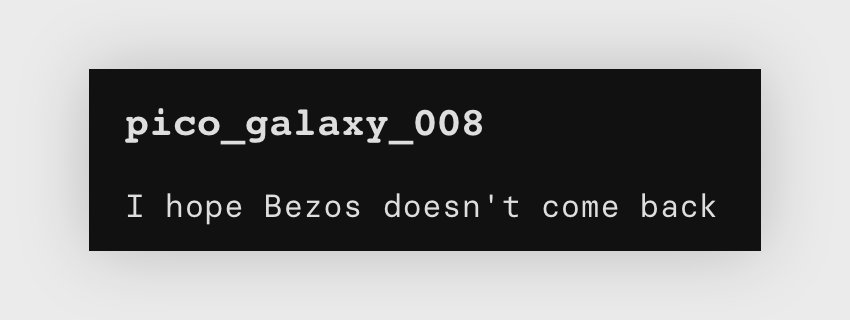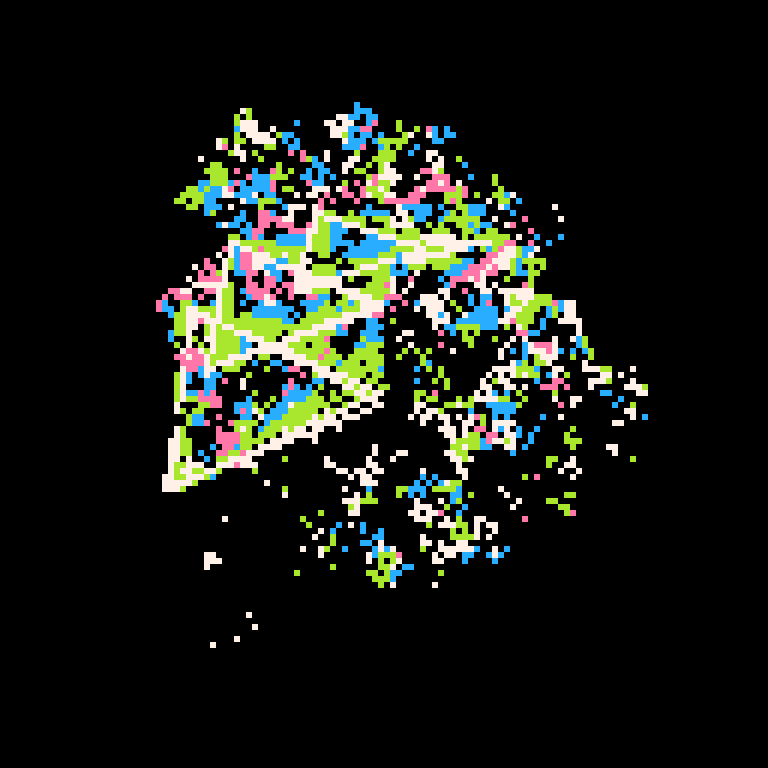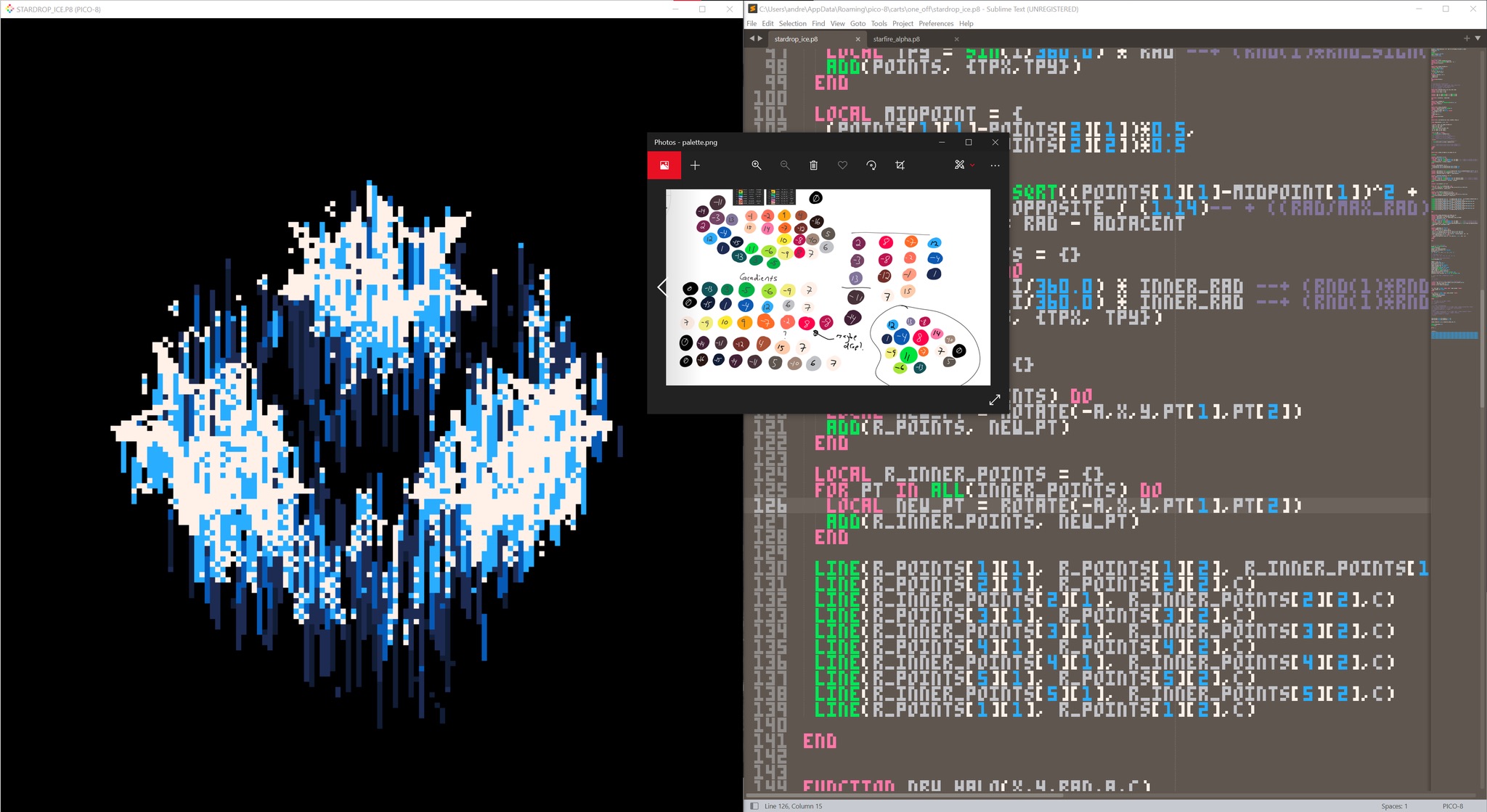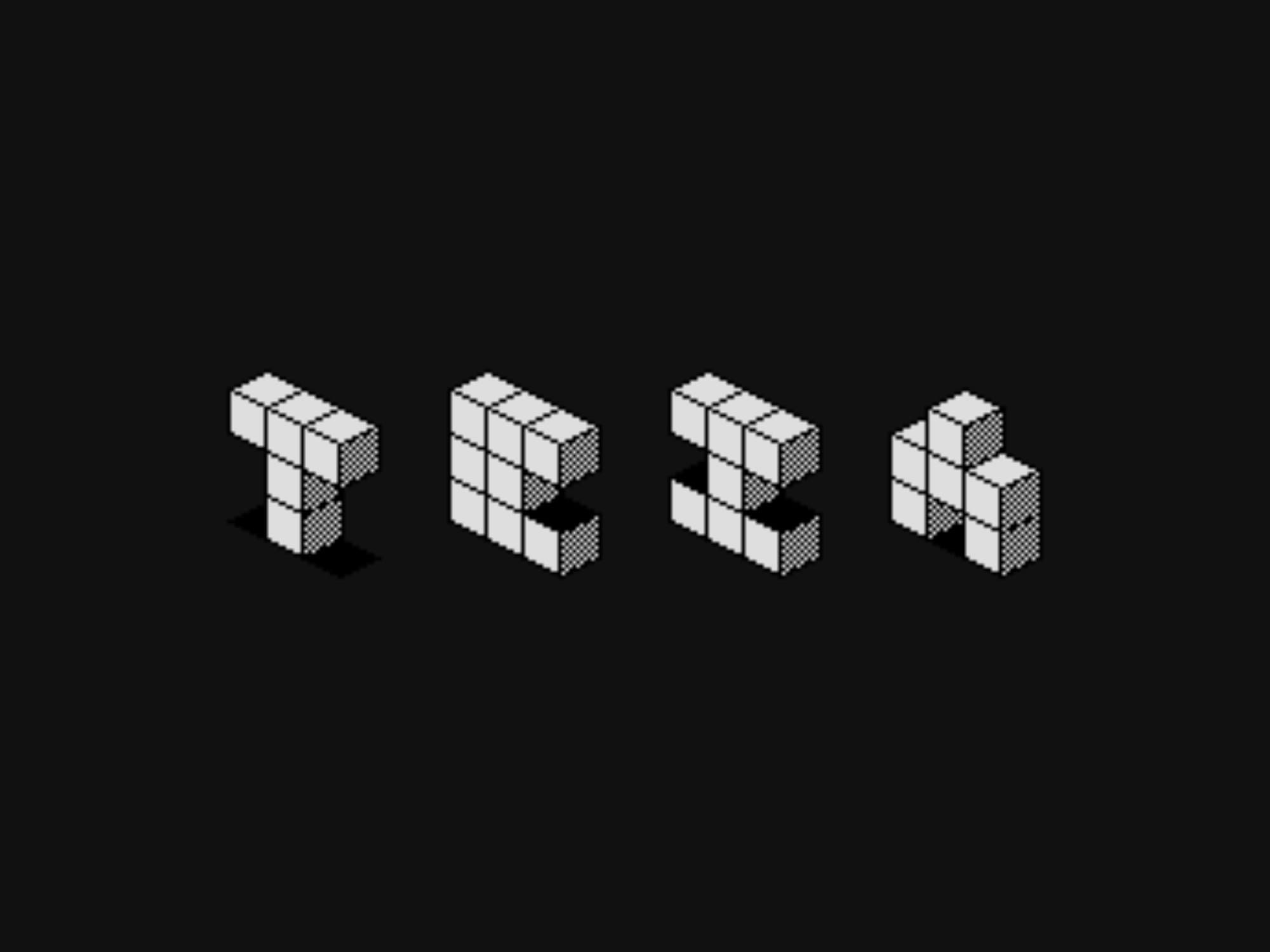In Process is a series that examines the inspiration, methods, and tools used by artists to create their work. Each episode focuses on a specific piece.
Find all episodes of In Process on the Ep. 0: Index page.
In this episode, we take a look at pico_galaxy_008 (pictured above) by aebrer.
I find aebrer’s work completely hypnotizing. It’s unapologetically digital, but also highly organic. This all starts to make sense when you learn about the process used to create the pieces, rooted in concepts from biochemistry and biophysics.
What was the inspiration for pico_galaxy_008?
The inspiration for this piece is actually pretty straightforward.
For all of my art, the number one major theme is “equilibrium”. My background and training are in Biochemistry and Biophysics, and before that Molecular Biology and Genetics.
I’ve always been obsessed with natural systems and how they are regulated. In life, we have all these seemingly insane processes, but they really arise from simple components and rules, emergently.
The key to all these processes is usually some kind of steady-state equilibrium. Once I started working on that, often producing AI or ML models to predict it, I started seeing similar equilibria everywhere, not just in biology.
From there it felt really natural to extend that to my art.
aebrer’s pico_galaxies Series
For the pico_galaxies series, all the pieces focus on a delicate equilibrium between at least two forces; an additive force that draws new pixels onto the screen, and a destructive cascade that “burns” the pixels down off the screen to clear it. If I mess up this equilibrium I get either noise that fills the screen, or just a blank screen.
The other major theme for the series is this notion of spirals or circles, two shapes that really fascinate me, due to how perfect they are while somehow still occurring in nature constantly.
Then, for each set of three in the series, I focus on a few specific themes. For this piece, I was focused on triangles and a sort of fun 90’s vibe. The goal is always to create a circle/spiral in the overall composition of the piece, but typically using shapes that are not circles or spirals.
Getting triangles to create a circle requires movement, timing, and equilibrium, which leaves burning pixels on the screen long enough to create the effect I’m looking for.
In this piece in particular, the shape of the triangles themselves arises from a simple logarithmic spiral. The burning process is also done entirely with tiny little triangles, which makes me really happy.
Describe the technical process of the piece. What medium and tools were most important to creating it?
For this series, I do all my work on the Pico-8. It’s a “fantasy console”; basically an emulator for a video game console that never existed. It has severely limited hardware and software constraints, for example, only 32kb of RAM. There are also only 32 possible colours, and I can only draw 16 to the screen at any one time, although typically I find I don’t need more than 8 for what I like to do.
The Pico-8 has a lot of tools for sprites and sounds, but I don’t really know how to use them. I’m a coder, so I just code everything in Lua (the stripped-down version that Pico-8 uses).
Everything you see in the pico_galaxy_008 GIF is generative; it’s being rendered from code that instructs it what to draw on the screen for each frame.
The most beautiful Pico-8 pieces, in my opinion, are the interactive ones, minted as an HTML objkt that contains the emulator. These display at a smooth 60fps, and they can run forever, with randomness, showing how the stable equilibrium really can go on forever.
That said, many collectors don’t want to collect interactive pieces, they prefer simple GIFs. Showtime (a social network for NFTs) for example doesn’t even list any of my HTML pieces, even though they all have a GIF thumbnail that could be displayed.
So in general the hardest part of this process is programmatically enforcing a perfect loop, and recording the GIF such that the loop is captured correctly.
Because all of this relies on noise and randomness, I actually exploit the fact that in computers you don’t get truly random values, you get pseudorandom values. The seed that I choose dictates what random numbers will be generated.
Typically I will choose some period of time in which I reset the seed, causing the noise to be the same noise that occurred previously. If I can time this with the overall equilibrium correctly, I can actually get a rare moment where everything on the screen is still “random”, but it’s exactly the same random state as a previous frame. I capture the GIF loop there.
Typically I aim for 10 seconds, just because it makes the math a bit easier for me. I’m terrible at arithmetic. More of a theory guy when it comes to math.
If anyone is reading this and does want to know more, or wants to get into coding on the Pico-8, I’ve recently started kind of an enthusiast Discord for Pico-8 art. Feel free to DM me on Twitter, and I’ll invite you to it. We share a lot of tips and code in there, and I often publish or mint my source code.
I really love open-source, and I wouldn’t be even half as good at all the programming I do if it weren’t for the amazing contributions of those who came before and shared their code. So I like to carry that forward.
How did the NFT for the piece come about? Did you make this piece specifically for hic et nunc, or was this a piece you'd already made and retrofitted for the platform?
I made this piece specifically for HEN.
I mint all my work on HEN because I really just think that the world is fucked. The environmental damage we’ve already done is far ahead of even our worst models. For example, a tornado recently tore through my town, less than 3km from my house.
Things are only going to get worse, not better. Meanwhile, billionaires are taking pleasure trips to space. It’s disgusting.

So I can’t use or support any art that is minted on a platform that has high energetic costs. The future is going to be dark… literally.
Energy is going to be rationed in ways we can’t even predict. I can’t bring myself to contribute even marginally to that. Not to mention, HEN is really special, and the vibe is totally weird and unique. I fell in love with it the second I learned how to use it, during Objkt4Objkt, and I haven’t looked back.
However, to talk about this piece specifically, it’s part of this pico_galaxies series that I decided needed to have their own wallet on HEN. This helps me keep the whole series together in one place, so you can really see how it all looks.
Otherwise, my other series are kind of mixed together in my main account.
Where is the best place to learn more about your work?
You are always welcome to follow me on Twitter, Tweet at me, DM me, I’m an open book. I promise I won’t judge anyone for using ETH platforms lol, reality is never black and white.
Otherwise, you can find all my art (including the weirder stuff) at aebrer.xyz, and the pico_galaxies project at arethey.cool.
For the pico_galaxies I’m also happy to work with a collector directly if they are interested in a custom one, as long as it fits within the themes I’m planning to use. I like getting direct feedback during the process, and you can’t beat having a buyer already lined up 😋




